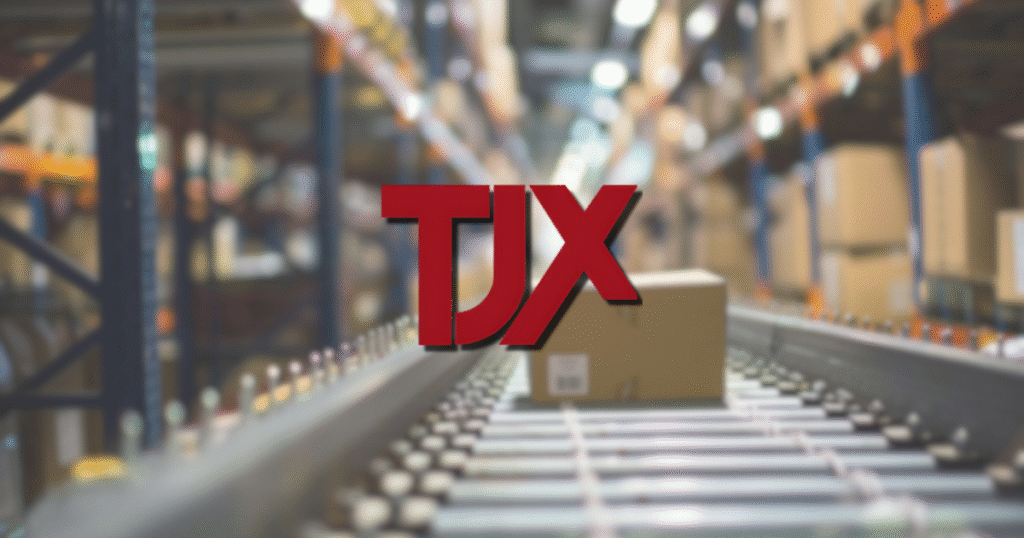When tariffs disrupt global trade, retailers face a critical test: protect margins or protect customers? Many default to blunt price hikes, but this often erodes loyalty. The better path is to embrace tariff resilience strategies that balance profitability with value perception.
One company has mastered this balancing act: TJX, the parent of T.J. Maxx, Marshalls, and HomeGoods. Its playbook proves that resilience comes from agility, not across-the-board increases. Instead of relying on spreadsheets and averages, TJX applies tariff resilience strategies rooted in precision, flexibility, and opportunistic buying.
TL;DR
- Granular pricing strategies: Work backwards from the market, not just cost spreadsheets.
- Assortment flexibility: Shift away from tariff-heavy categories and toward stronger-value products.
- Opportunistic buying: Leverage excess inventory from competitors to offset tariff pressure.
The result is that TJX protects both profitability and customer loyalty.
1. Granular Pricing as a Tariff Resilience Strategy
One of the strongest tariff resilience strategies is pricing item by item instead of using blanket formulas.
CEO Ernie Herrman explained, “buyers work it backwards… it’s absolutely a deal-by-deal, SKU-by-SKU, brand-by-brand situation.”
Here’s how TJX executes it:
- Benchmark against competitors’ prices, not just internal margin models.
- Protect the value gap, ensuring customers still see TJX as the better deal.
- Stay flexible SKU by SKU, absorbing margin hits selectively rather than universally.
This method aligns with insights from Harvard Business Review, which notes that companies that anchor pricing to customer perception outperform those that focus solely on cost-plus models.
2. Shifting Assortments to Navigate Tariffs
Another crucial tariff resilience strategy is assortment agility. When tariffs hit certain categories hard, TJX reduces exposure and shifts toward categories with better values and availability.
Herrman summed it up: “If we run into a category that’s highly tariff driven and we’re not happy with the values…we can just downplay that category.”
This works because TJX has:
- 1,300 buyers spread across global markets.
- 21,000 vendors offering a wide sourcing net.
- Multiple categories across apparel, home goods, and lifestyle products.
By leveraging its vendor diversity, TJX executes one of the most effective tariff resilience strategies: balancing category exposure without sacrificing customer choice.
3. Opportunistic Buying in a Tariff Environment
Tariffs create ripple effects across retail markets. Some retailers over-order, others cancel shipments, and many are left with excess stock. TJX thrives in this environment.
CFO John Klinger explained that “taking advantage of market opportunities… allowed us to… help offset the tariffs.”
This approach strengthens resilience by:
- Turning others’ excess into TJX’s margin advantage.
- Buying opportunistically at lower costs while maintaining strong assortment.
- Keeping customer trust intact by holding prices steady.
This is a textbook example of how tariff resilience strategies don’t just mitigate risk, they can also create competitive advantage.
Why Not Just Raise Prices?
Many retailers fall back on across-the-board price hikes. The problem? They damage long-term customer relationships.
- Loyalty erodes when shoppers sense a disconnect between value and price.
- Competitors gain share if they manage tariff costs better.
- Brand perception weakens in categories where value drives decision-making.
Resilience in modern retail comes from adaptability, not rigidity. TJX’s strategies prove that a smarter approach keeps both customers and shareholders happy.
The Broader Lessons of Tariff Resilience Strategies
TJX’s playbook highlights three lessons for retailers facing tariff headwinds:
- Granular pricing strategies ensure customer value perception stays intact.
- Assortment flexibility reduces exposure to tariff-heavy categories.
- Opportunistic buying turns disruption into advantage.
Retailers that rely on blanket price hikes risk eroding loyalty and losing share. Those that apply smart tariff resilience strategies will weather not only tariffs but also inflation spikes, supply chain shocks, and currency fluctuations.
FAQs on Tariff Resilience Strategies
1. What are tariff resilience strategies?
They are retail approaches that protect margins and customer value perception during tariff increases, using pricing, assortment shifts, and opportunistic sourcing.
2. How does TJX apply tariff resilience strategies?
TJX uses SKU-level pricing, vendor diversity, and opportunistic buying to keep prices attractive while protecting profitability.
3. Can smaller retailers apply these strategies?
Yes, even smaller retailers can apply SKU-level pricing analysis and diversify vendor bases to improve resilience.
4. Why are blanket price hikes risky?
Because they erode customer trust and create openings for competitors to gain share.
5. Do tariff resilience strategies work beyond tariffs?
Absolutely, they’re equally useful against inflation, supply chain bottlenecks, and global trade shifts.
Final Takeaway
TJX demonstrates that the best tariff resilience strategies are agile, precise, and opportunistic. By anchoring pricing to the market, flexing assortments, and turning disruption into buying opportunities, TJX protects both profitability and customer trust.
Retailers that adopt these strategies will be better positioned not only for tariffs, but for whatever comes next.
Related content you might also like:
- What You Don’t See at Checkout: The Hidden Fight to Keep Prices Down
- Tariffs, Turbulence, and Tactics: What Dollar Tree Just Taught Us
- Tariffs Impact on Supply Chain Drives P&G’s Strategy Shift
- Costco’s Tariff Strategy Is a Masterclass in Real-Time Resilience
- Weekly Retail Visits: CityTarget




